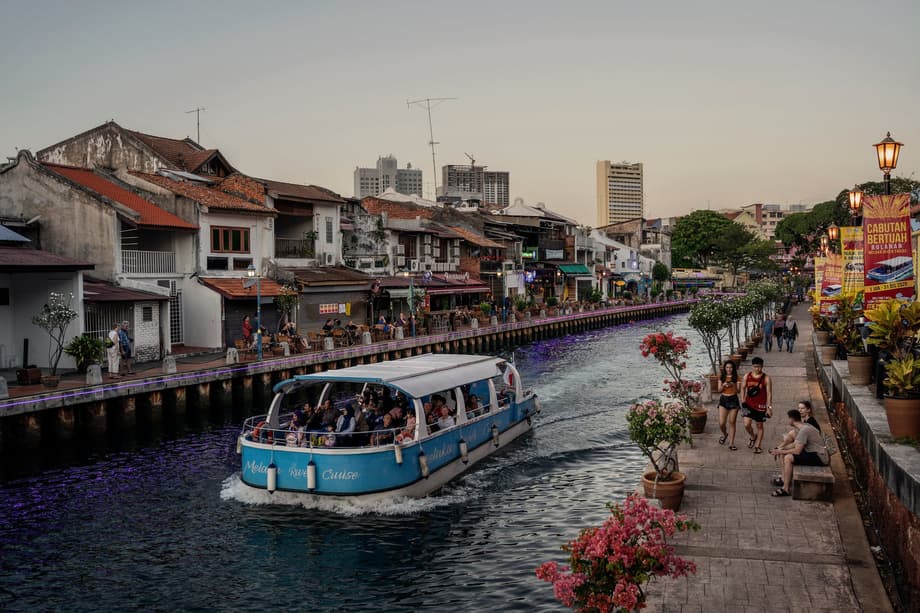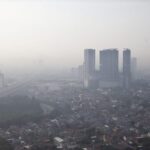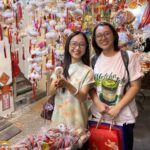A historic port and a fragile heritage
At the narrow strait that links the Indian Ocean to the South China Sea, Malacca grew into one of Asia’s great meeting points. For centuries the port tied East to West through spice, textiles, and ideas. The mix of traders and settlers, Chinese and Arabs, Indians and Persians, Turks and Siamese, Europeans and local Malays, created a city where languages, food, and faiths blended in daily life. The harbor later silted, trade routes shifted, and Malacca quieted into a historic state capital. The city still carries architecture and street names from those cycles of power. Inside that layered past, one small community became a living bridge of cultures. The Kristang, descendants of Portuguese settlers and local women, show how early globalization once produced a distinct local identity that now faces strain from the latest wave of change.
Kristang families served as civil servants, fishermen, clerks, and musicians across Malacca’s long arc of empire and nation building. Their neighborhood on the coast, commonly called the Portuguese Settlement, formed in the 1930s to regroup Catholic Eurasian households near the sea that fed them. Music in the branyo rhythm, Catholic festivals, and recipes like curry debal held the community together while rulers changed from Portugal to the Netherlands and Britain, then to an independent Malaysia. That continuity is no longer assured. The pressures of rapid development, migration, and a political order centered on ethnic categories have pushed a small population toward a tipping point.
Who are the Kristang
The Kristang are a Catholic Eurasian minority rooted in Malacca, with relatives in Singapore and across the region. Most live in and around the Portuguese Settlement, a coastal enclave of narrow streets, seafood kitchens, and family chapels. Many others have moved to Kuala Lumpur, Singapore, Australia, and Canada. Daily life draws on a blend of Malay and Portuguese customs. Families celebrate St Peter’s Day at the waterfront, a nod to the patron of fishermen. Cuisine combines local spices with Iberian methods. The language known as Papia Kristang, a Portuguese based creole spoken at home and at feasts, carries jokes, nicknames, and seafaring terms that do not translate cleanly into Malay or English.
The community is small. Residents estimate about 1,200 people in the Malacca settlement, with several thousand more Kristang elsewhere in Malaysia and overseas. Emigration by young adults, intermarriage, and limited economic opportunity have thinned ranks across two generations. Elders worry that the remaining cultural anchors, language and church, are weakening at the same time.
Language at risk
A creole language forms when people with different mother tongues need to communicate for trade, work, and home life. Over time the improvised trade speech turns into a mother tongue for children. Papia Kristang grew in that way from the sixteenth century, drawing most of its words from Portuguese while adopting Malay like grammar. Verbs do not change form for tense or person. Small particles mark time and focus. The word tokah can mark an action that happens to someone, as well as obligation, a pattern that mirrors how Malay uses kena and harus, and how Portuguese speakers apply certain auxiliaries. The result is a compact, expressive medium where a fisherman can describe tides and gear in a few syllables.
That rich system is now endangered. Few children acquire Papia Kristang as a first language. Schools do not teach it, and public life requires Malay or English. Parents switch languages so their children can succeed in examinations or find work in cities. Online, Kristang speakers still trade jokes and lessons, and community tutors in Malacca run informal classes. A parallel revival in Singapore, including weekend lessons under a program known locally as Kodrah Kristang, has attracted learners since 2016. These efforts slow the loss and build pride. Experience from places such as Hawaii and New Zealand shows that language can rebound when taught in preschools and supported in media. The same approach could work here if it wins steady funding and space in local schools.
Faith, identity, and Malaysia’s legal landscape
Religion is a core part of Kristang identity. The community is largely Catholic, with parish life centered on Malacca churches and home altars. Malaysia’s constitutional framework defines a Malay as a Muslim, and marriage across religious lines has legal consequences. In practice, a non Muslim who marries a Muslim is generally required to convert to Islam for the marriage to be registered. For a small Catholic minority, that norm can pull families away from traditions that once carried Kristang identity. Priests report fewer young people at mass. Family trees branch in new directions as religion shifts across generations.
Ethnic policy has also shaped daily choices. Since the 1970s, affirmative action programs have favored Malays and other indigenous groups in higher education and parts of the civil service. The Kristang, classified as a small Eurasian minority, have struggled to find a secure place within that framework. Some have chosen to seek opportunities abroad. Others stay but feel that their language and history receive little formal support. The result is a quiet erosion of confidence that spreads beyond the church and the home.
Development pressures on the coast
Malacca’s shoreline has changed fast in the past decade. The Melaka Gateway project, a large complex planned on reclaimed land and offshore islands, promised a cruise terminal, marinas, and new housing. Financing linked to Chinese companies gave the plan regional weight. Construction and dredging altered currents and closed access to parts of the coast. The development faced several stops and restarts as governments changed and approvals lapsed. For a community that has fished the same waters for generations, uncertainty over the project became a source of daily stress.
Fishing grounds disrupted
Kristang fishers say catches fell and travel routes lengthened as reclamation advanced. Nets snagged on new seabed obstructions. Shallow waters near the settlement became muddier, a problem that usually happens when dredging stirs up fine sediment. Extra fuel and longer trips cut already thin margins. In a community where fishing income supports restaurants and festival spending, these shocks spread quickly across households. Environmental assessments often propose mitigation, but small boat crews rarely have leverage to make sure the fixes arrive on time.
These patterns are familiar along busy coasts. Reclamation changes tidal flows. Migratory fish avoid new noise and light. If developers and local governments do not create safe channels and launch points, traditional livelihoods shrink. The experience in Malacca fits a wider story in Southeast Asia where nearshore construction has grown faster than protection for artisanal fishers.
Land politics and recognition
The Kristang settlement dates to the colonial era, when British administrators set aside coastal plots for Catholic families. Over time those terms shifted, and land that residents understood as freehold was reclassified under different tenure, leaving households to negotiate renewals and fees. Community leaders sought clearer rights and political allies. A request to join a dominant Malay party went nowhere, and state leaders urged the community to market heritage for tourism.
That push created a mixed reality. Cultural showcases supported some jobs and raised the community’s profile, yet large scale reclamation moved ahead at the same time. Kristang activists submitted memoranda, worked with environmental groups, and built networks abroad to press their case. The pressure contributed to a pause in the Melaka Gateway schedule. The underlying development logic still holds strong at state level, and the community remains wary of new rounds of coastal expansion.
Tourism, culture, and the risk of stereotype
The Portuguese Settlement has become a signature stop for visitors who want seafood dinners and a taste of Creole culture. Holiday seasons bring Christmas light displays and boat parades for St Peter. Musicians keep the branyo beat alive with guitars and drums. Many Kristang welcome the chance to host guests and sell family recipes. When income depends on a few busy months and on a single image of the past, identity can collapse into costume and menu. Language, prayer, and the rhythms of daily work risk sliding out of view.
A healthier model gives residents control over what is shown and sold. Community run museums, language workshops for tourists, and homestays can spread earnings across families. Revenue can underwrite classes in Papia Kristang and apprenticeships in music and boat craft. A formal heritage zone, with sensible rules on noise and signage, would help balance nightlife with the quiet needed for community life. Tour buses leave at midnight, but neighborhoods need sleep, space, and clean lanes the next day.
What survival could look like
First, language needs a base. Recognize Papia Kristang as local heritage and support optional classes in primary and secondary schools. Fund preschool playgroups where children sing and count in Kristang. Produce radio segments and short videos featuring elders telling stories and naming fish, plants, and food. Put Kristang names on street signs and on the waterfront. Use the language in parish life where appropriate, and publish prayer books that mix Kristang, Malay, and English.
Second, protect livelihoods while planning growth. Require independent environmental impact assessment EIA for any new reclamation and make the full reports public. Set aside a marine buffer for small boats with marked lanes and safe ramps. Give fishers a seat on planning committees, with voting power, not just consultations. Link compensation to verified losses and deliver it before work starts. Create a transparent catch monitoring system so trends are visible in time to adjust policy.
Third, secure the ground under people’s feet. Regularize land titles in the Portuguese Settlement in ways that reflect long occupancy and family inheritance. Offer grants for home repairs that use local style. Promote grassroots business models where community associations share ownership in waterfront ventures. Build networks with related communities in Singapore and beyond for cultural exchanges and scholarships. Young Kristang often leave for study or work. Remote jobs and seed grants can make returning to Malacca a realistic choice.
At a Glance
- Malacca once linked oceans as a major spice port, then declined as its harbor silted.
- The Kristang, a Catholic Eurasian community rooted in the city, now number about 1,200 in the Portuguese Settlement with more in the diaspora.
- Papia Kristang, a Portuguese based creole with Malay like grammar, is endangered with few child speakers.
- Intermarriage rules tied to religion shift family identities and reduce Catholic parish life.
- Affirmative action for majority groups and limited support for minorities drive emigration and weaken community confidence.
- The Melaka Gateway reclamation disrupted fishing and sparked organized resistance, prompting pauses in the project.
- Land tenure uncertainty and tourism pressures affect daily life in the settlement.
- Language classes, fair coastal planning, and secure land rights can help the Kristang culture endure in Malacca.




